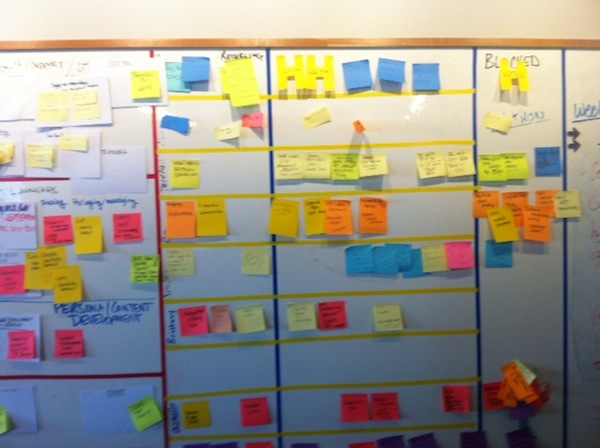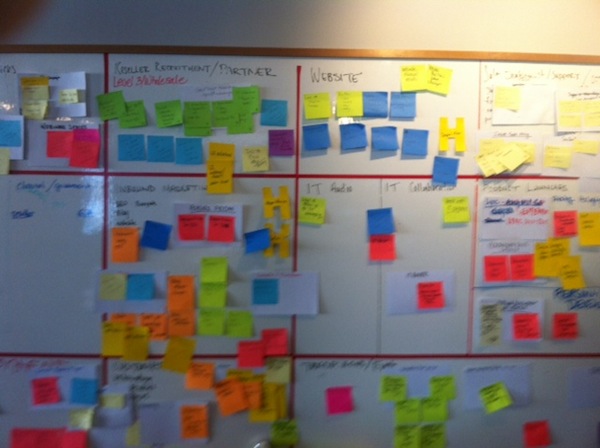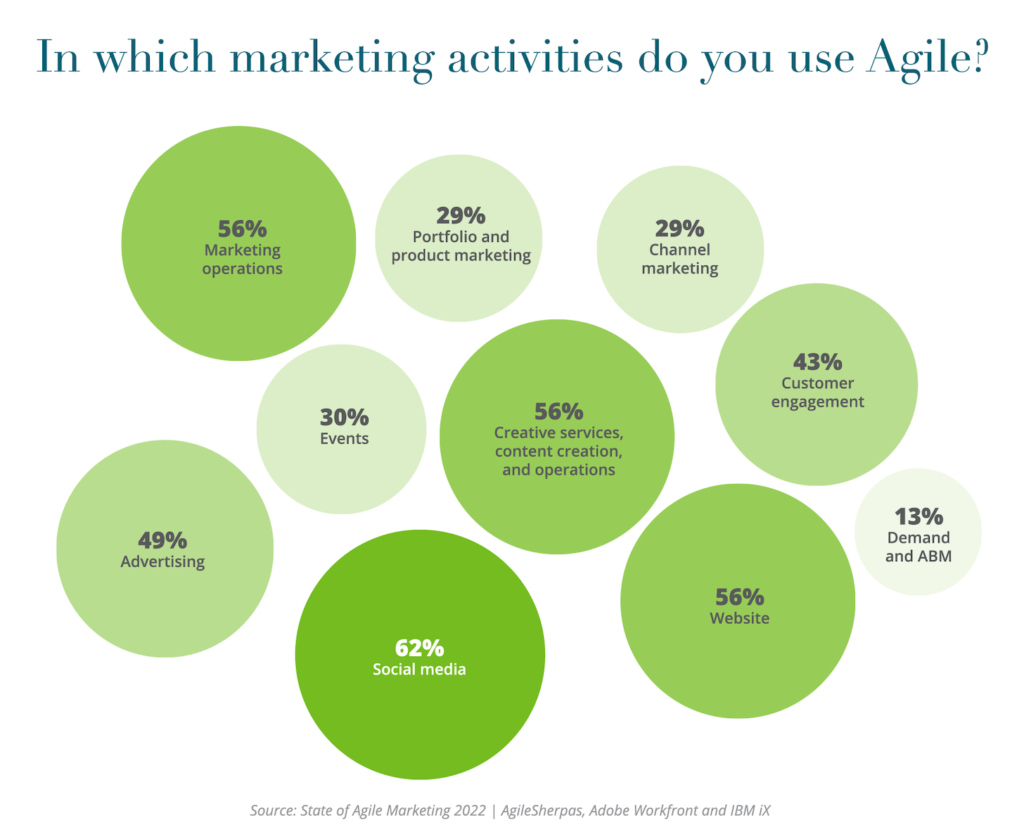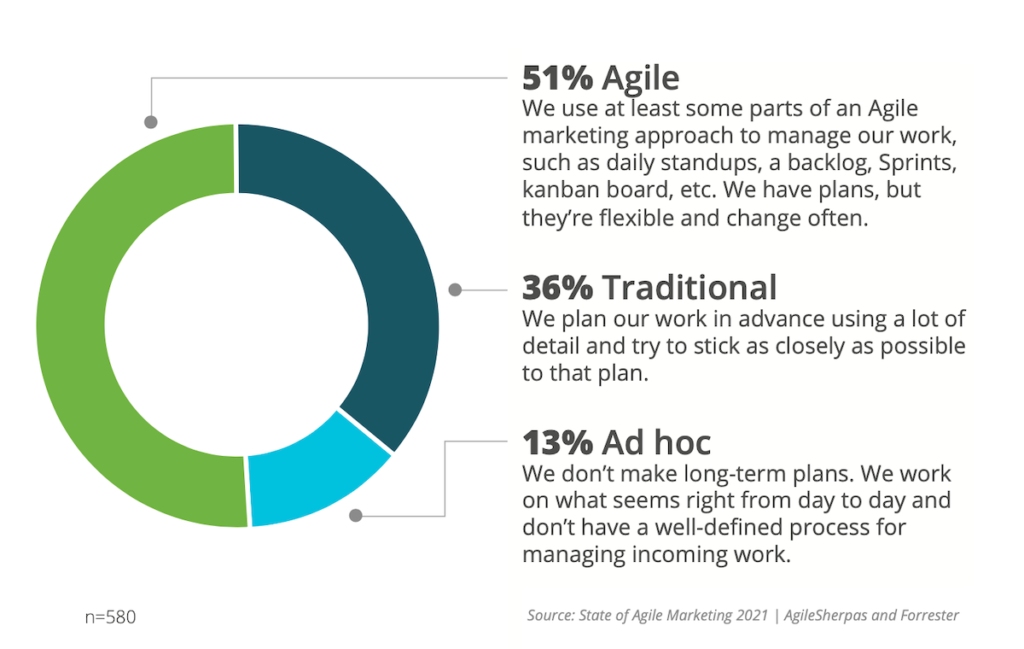
As the clockspeed of marketing continues to accelerate, more and more marketers are exploring agile marketing — the application of agile management techniques in the marketing department — as a way to adapt to this new environment.
But agile marketing is not yet a textbook methodology. While agile processes have been well developed in software engineering circles over the past two decades, the application of them to marketing is relatively new.
And while there are broad similarities in the challenges they face, marketing is not engineering. So popular agile development methods such as Scrum and Kanban often need to be adjusted and tweaked for marketing.
Today, this means that most early adopters of agile marketing are having to experiment, figuring this out as they go along. And there aren’t a lot of published examples yet of how other marketers are doing this.
Therefore, I was incredibly excited that Mike McKinnon of ReadyTalk was willing to do a Q&A with me about their experience with agile marketing.
Mike will also be giving a presentation on agile marketing at the Eloqua Experience event in San Francisco at the end of October, “The Modern Marketer Can Be Agile Too!” If you attend, it will be a great opportunity to hear his story first hand.
Can you tell me a little about your background and your role at ReadyTalk?
I am the Director of Marketing Operations at ReadyTalk.
As such, I manage our lead flow processes as they pertain to both Eloqua and SFDC. I am also in charge of tracking ROMI through marketing sourced revenue, campaign attribution and our lead flow which is modeled after Sirius Decision’s waterfall methodology.
I also manage our inside sales team as they are the front line of lead qualification and need to be aligned properly with marketing campaign messaging and processes.
What inspired you to apply agile methods to marketing?
One of our biggest customers is Rally, who develops agile software, and we used their software internally for our development team. Our department was growing and we needed to find a way to better organize.
Marketing is unique in that we service many, if not all, of the departments within our organization. It is very easy to get siloed within marketing since we have an outbound marketer, an inbound marketer, a customer success marketer, and product. Each person had little visibility into what the other was doing unless they worked on a shared project. We were doing a lot of last minute scrambling, and it was hard to set priorities for the team.
It is very easy to get siloed within marketing. Each person had little visibility into what the other was doing unless they worked on a shared project.
Can you describe what your agile process is like? How does it differ from agile software development?
If a developer is reading this, they will cringe as what we do is a combination of a couple of different processes. We are marketing after all, and we need to be creative, and we can’t be bound by a single iteration where nothing changes. We have to respond to market changes, competitor influences, and have the ability to change a campaign on the fly if we see it underperforming.
We are marketing after all, and we need to be creative, and we can’t be bound by a single iteration where nothing changes.
It starts with a yearly review, and then we set our goals for the upcoming year. Usually these fall into three buckets — new customers, retain customers, grow customers. We lay out the strategy to obtain each one of these objectives and place them on our board to remind everyone what our priorities are. Each quarter, we lay out the tactics for that quarter that will reach those objectives.
Every two weeks we do a sprint, and we map out our next two week workload. We do this as a team. Each member has 10 minutes to stand up and lay out their two week iteration process. We use the quarterly strategies to make sure we are doing things (prioritizing) that will help us achieve our yearly objectives.
What we have done is taken a mixture of Scrum and Kanban method. We have daily stand ups, and we use a Kanban board to move our daily tasks over to a done, blocked, or working column. This process is usually called Scrum-ban. Scrum-ban is especially suited for maintenance projects or projects with frequent and unexpected user stories. In marketing’s case, the time-limited sprints of the Scrum model can be too strict, but Scrum’s daily meetings and other practices can be applied.
I have attached a picture of our board so you can see what it looks like. Each member is a different color, and each member has a swim lane where they put their daily tasks into. As they complete the task, they move it to the done column — or if they are blocked, they move it to the blocked column of the person who is blocking them.

On the left, is our two week iteration projects separated into different categories that relate back to our quarterly and yearly priorities. You take tasks from these and move them into your daily swim lane.

Were there any challenges in the adoption of agile? How did you overcome them?
At first, some team members thought it felt very big brother-ish — almost a way to monitor who was doing work and who was not. You have to be sure and set that level right away and let everyone know that this is a way to more efficiently organize their days.
We went through several iterations of what our Kanban board looked like. At first, we went crazy and got really complicated and then we dumbed it down to KISS. We are at a happy medium right now since we have about 7 people that Scrum daily.
As we grow our team, I can see the board changing to adapt to the new members. Getting everyone to use the board correctly was hard at first as well, since not all team members warmed to the idea right away. Having a Scrum master helped this and kept everyone honest about the work they were doing and generally communicating.
What have been the benefits of going agile?
We now have visibility into everything each team member is doing on a daily basis. Projects that need other people’s help are noted at the beginning of the two week sprint, so there are very few surprises.
We also can now tell the impact that a change in one area has upon projects that you might think are unrelated. This allows us to prioritize as a team rather than one person making the call themselves. It has allowed us to stay on task to our objectives and focus our resources more appropriately. Also, it has helped team members see where they can help out when one team member is trying to do too much.
We can now tell the impact that a change in one area has upon projects that you might think are unrelated. This allows us to prioritize as a team.
What advice would you give other marketers who are thinking about going agile?
Just jump into it. There is no right or wrong way when you talk about adapting agile to a marketing department.
Start with 2 week sprints, but be willing to change those. Encourage team members to speak up if something is not working for them or if they see a better way to do something. It is a constant process of improvement and will only work if all members have buy-in.
Thank you, Mike — we greatly appreciate you sharing your agile marketing experience!



As someone who came from software and is now in marketing this agile concept is very intriguing. I would imagine that it also creates opportunity for new ideas as the teams are seeing what others are doing. If the team is open to challenging and questioning one would think the ideas would get better and bad ones would get killed faster, but keeping the “brainstorming and scope creep” out of the process must be difficult.
Great article. We’ve done something similar at our company. After seeing how you guys do it…we definitely have room to improve! Here’s a pic of our board: http://wp.me/a30KX8-5c
Thank you for a great post – great to see how others are doing it
@matt we went through quite a bit of revisions on the board – always asking how things could be improved.
– mike
I really like the idea because it solves many of the silo issues that marketers face, especially in large companies. Has anyone done this with a marketing team not in the same location?